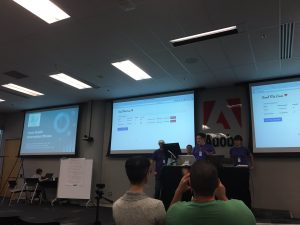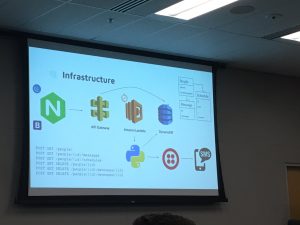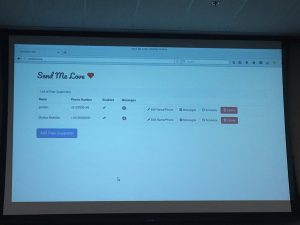I gave a workshop at Random Hacks of Kindness on Trans 101 for Coders. RHOK is a bi-annual hackathon. You can view the slides I presented here.
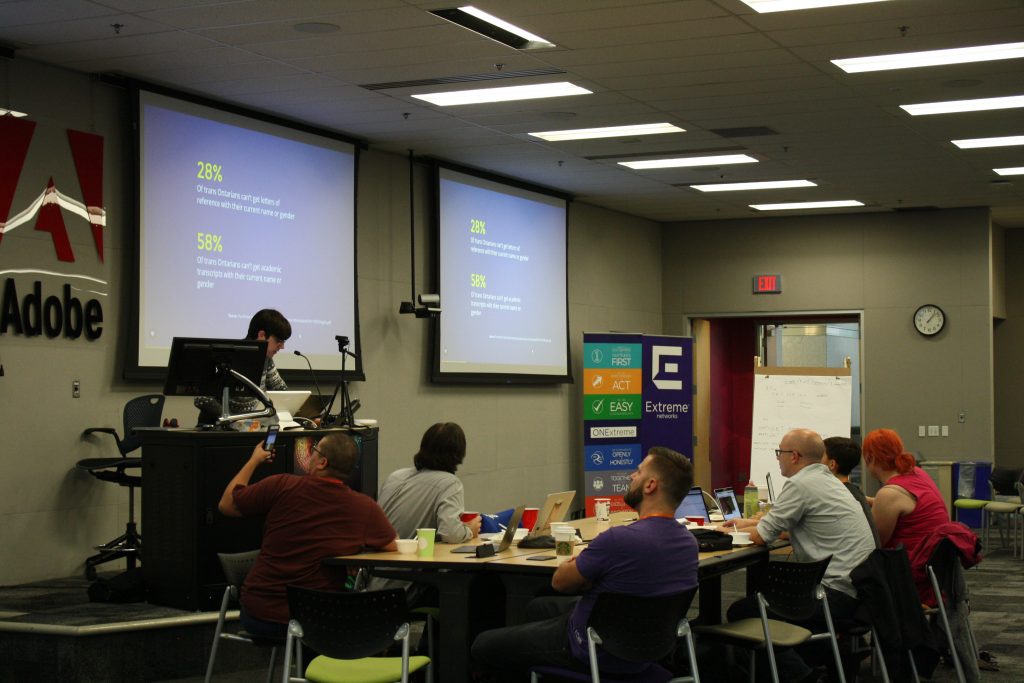
This was the first time giving a talk to a mainly cisgender/straight audience where I didn’t feel like I had to explain who trans, cisgender, non-binary, two spirit people were. Sign of the times.
This talk focused on how to make workplaces welcoming to trans people, focusing on tech companies specifically. Advice like de-emphasizing references and academic transcripts by evaluating prospective employees with real-world coding challenges don’t apply as well to other industries. The workshop had a second theme of discussing software design. Namely, in the vein of i18n, looking at assumptions that developers make around names and gender that are not applicable to everyone and end up creating barriers for trans people.
The audience took it well.
For the rest of my time at the hackathon, I was participating. It actually went super well. The format was simple: on Friday night, the projects from NGOs would be introduced. On Saturday morning, the participants would choose which team to join, and work on the associated project for the rest of the day. There would be a bit of time Sunday morning to develop, and then projects would be presented at noon.
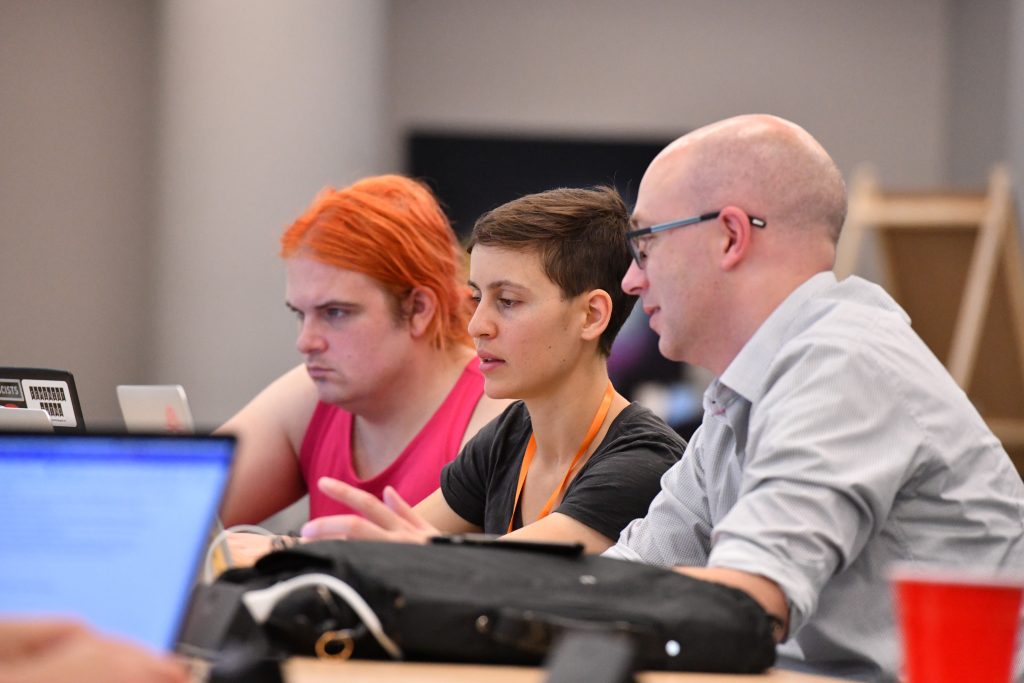
Our team was composed of people having very different skill sets. Everyone compromised in order to put something together. Those working on the back-end had more familiarity with Ruby and Go, but chose Python as the common language because they knew it a little bit. I worked in the front-end despite being more a back-end person, because I thought the back-end was better served by other team members.
In the end, those compromises meant that we delivered a pretty impressive product in a little over a day: a web platform that allowed you to add recipients to a list, to whom SMSs with custom messages of support could be sent at various scheduled times. We had everything done – a functional front-end with a cool domain (http://sendme.love/), a backend that would handle the text messaging, and a test harness for it all.
I was really proud of work. During the presentations, it seemed like our team worked best together. Other projects involved members coming up with multiple solutions, some of them almost indistinguishable from each other. I took that to mean that they couldn’t work together, so members did their own thing. Or a lot of work on a back-end, but no real completed MVP.
This was my second non-work related hackathon, and it gave me taste to do a third.


